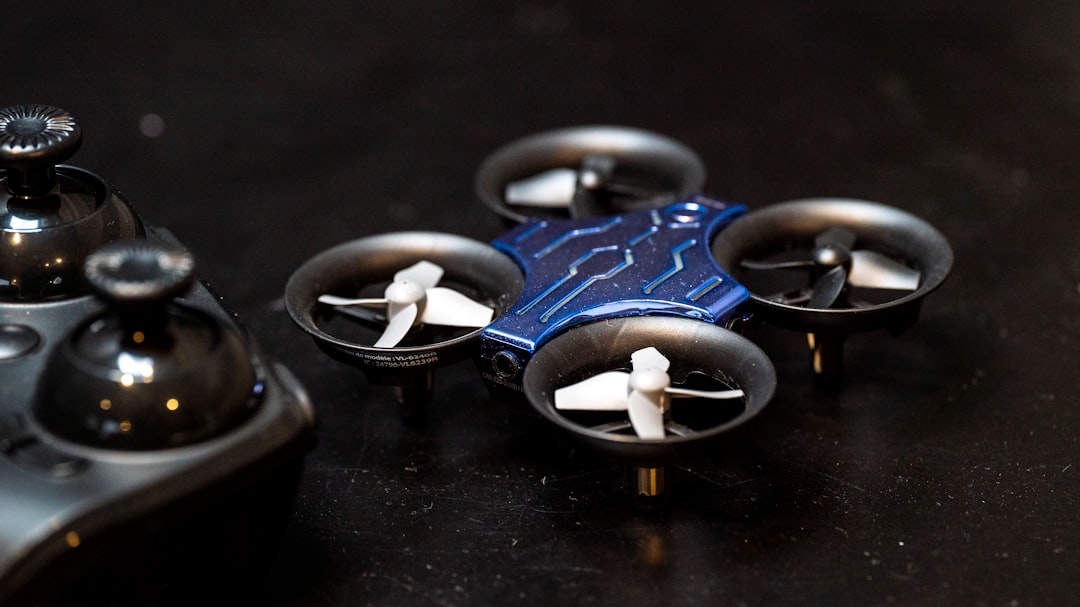In recent years, the integration of artificial intelligence (AI) into various sectors has revolutionized how we approach tasks, and the realm of dog training is no exception. KI-based Hundetrainingssysteme, or AI-based dog training systems, have emerged as innovative solutions that leverage advanced algorithms and machine learning techniques to enhance the training experience for both dogs and their owners. These systems are designed to analyze canine behavior, provide tailored training recommendations, and even facilitate remote monitoring, making them invaluable tools for pet owners seeking effective training methods.
The rise of these intelligent systems reflects a broader trend in technology where traditional practices are being augmented by smart solutions. With the increasing popularity of pet ownership and the growing demand for effective training methods, KI-based Hundetrainingssysteme offer a modern approach that combines convenience with efficacy. By utilizing data-driven insights, these systems not only help in correcting undesirable behaviors but also foster a deeper understanding of canine psychology, ultimately leading to a more harmonious relationship between dogs and their humans.
Key Takeaways
- KI-based Hundetrainingssysteme utilize artificial intelligence to analyze and understand dog behavior for effective training and behavior correction.
- The systems provide guidance and instructions for dog training and behavior correction based on the analysis of the dog’s behavior patterns and responses.
- KI-based Hundetrainingssysteme can be used for various applications such as remote monitoring of dogs, personalized training programs, and behavior modification.
- The use of KI-based Hundetrainingssysteme offers benefits such as personalized training, real-time monitoring, and effective behavior correction for dogs.
- The future of KI-based Hundetrainingssysteme holds great potential for revolutionizing the way dogs are trained and behavior is corrected, leading to happier and healthier relationships between dogs and their owners.
How KI Systems Analyze Dog Behavior
At the heart of KI-based Hundetrainingssysteme lies sophisticated behavior analysis. These systems employ a variety of sensors and cameras to observe dogs in real-time, capturing their movements, vocalizations, and interactions with their environment. By processing this data through machine learning algorithms, the systems can identify patterns and anomalies in behavior that may indicate stress, anxiety, or other emotional states.
This level of analysis allows for a nuanced understanding of a dog’s needs and tendencies, which is crucial for effective training. Moreover, the AI systems can adapt their recommendations based on individual dog profiles. For instance, if a dog exhibits signs of aggression towards other animals, the system can suggest specific training exercises aimed at desensitizing the dog to such stimuli.
This personalized approach not only enhances the effectiveness of training but also ensures that it is conducted in a manner that respects the dog’s unique personality and history. As these systems continue to evolve, they promise to provide even more refined insights into canine behavior, paving the way for more effective training methodologies.
Anleitung für Hundetraining und Verhaltenskorrekturen

The implementation of KI-based Hundetrainingssysteme comes with comprehensive guidelines that assist pet owners in navigating the complexities of dog training and behavior correction. These systems often include user-friendly interfaces that provide step-by-step instructions tailored to specific behavioral issues. For example, if a dog struggles with separation anxiety, the system may recommend gradual desensitization techniques, complete with schedules and progress tracking features.
Additionally, these systems often incorporate multimedia resources such as instructional videos and interactive tutorials. This multimedia approach caters to various learning styles, ensuring that pet owners can engage with the material in a way that resonates with them. The combination of clear instructions and visual aids empowers owners to implement training strategies effectively, fostering a collaborative environment where both the dog and owner can thrive.
Anwendungsfälle: KI-gesteuertes Hundetraining
The applications of KI-gesteuertes Hundetraining are vast and varied, showcasing the versatility of these systems in addressing different training needs. One prominent use case is in obedience training, where AI can help owners teach their dogs basic commands such as sit, stay, and come. By analyzing the dog’s responses to verbal cues and body language, the system can provide real-time feedback on the effectiveness of the owner’s training techniques.
Another significant application is in behavioral modification for issues such as excessive barking or destructive chewing. The AI system can monitor the dog’s behavior over time and suggest interventions based on observed patterns. For instance, if a dog barks excessively when left alone, the system might recommend specific toys or distractions to keep the dog engaged during those periods.
This proactive approach not only addresses behavioral issues but also promotes a more enriching environment for the dog.
Anwendungsfälle: Fernüberwachung von Hunden
In addition to direct training applications, KI-based Hundetrainingssysteme also excel in remote monitoring capabilities. Pet owners can utilize these systems to keep an eye on their dogs while they are away from home.
This feature is particularly beneficial for those who work long hours or travel frequently. Remote monitoring goes beyond mere observation; it allows for real-time interaction between owners and their pets. Many systems offer two-way audio capabilities, enabling owners to communicate with their dogs through a smartphone app.
This interaction can be comforting for both parties, helping to alleviate anxiety for dogs who may feel lonely when left alone. Furthermore, some advanced systems even allow owners to dispense treats remotely as a form of positive reinforcement during training sessions.
Anwendungsfälle: KI-gesteuertes Hundetraining

The potential for KI-gesteuertes Hundetraining extends into specialized areas such as agility training and scent detection. In agility training, AI systems can analyze a dog’s performance on obstacle courses, providing feedback on speed and technique. By tracking progress over time, these systems can help trainers identify areas for improvement and tailor exercises accordingly.
The system can monitor how effectively a dog follows a scent and adjust the difficulty level based on its performance. This adaptability ensures that dogs remain engaged and challenged throughout their training journey.
Benefits of Using KI-based Hundetrainingssysteme
The advantages of employing KI-based Hundetrainingssysteme are manifold. Firstly, these systems offer a level of personalization that traditional training methods often lack. By analyzing individual dog behavior and tailoring recommendations accordingly, they ensure that each dog’s unique needs are met.
This personalized approach not only enhances training effectiveness but also fosters a deeper bond between dogs and their owners. Moreover, the convenience offered by these systems cannot be overstated. With remote monitoring capabilities and real-time feedback mechanisms, pet owners can stay connected with their dogs even when they are not physically present.
This connectivity allows for timely interventions when behavioral issues arise, reducing the likelihood of negative habits taking root. Additionally, the wealth of resources provided by these systems empowers owners with knowledge and confidence in their training efforts.
The Future of KI-based Hundetrainingssysteme
As we look ahead to the future of KI-based Hundetrainingssysteme, it is clear that we are only scratching the surface of what these technologies can achieve. With ongoing advancements in AI and machine learning, we can expect even more sophisticated systems that will further enhance our understanding of canine behavior and improve training outcomes. The potential for integration with other smart home technologies also opens up exciting possibilities for creating comprehensive pet care ecosystems.
Ultimately, the future of dog training lies in harnessing the power of technology to foster better relationships between humans and their canine companions. As these AI-driven systems continue to evolve, they will undoubtedly play a pivotal role in shaping how we train our dogs—making it more effective, engaging, and enjoyable for both parties involved. The journey towards smarter dog training has just begun, and it promises to be an exciting adventure for all dog lovers out there.
Leider scheint keiner der angegebenen Links direkt auf KI-basierte Hundetrainingssysteme bezogen zu sein. Diese Links behandeln Themen rund um das Metaversum und virtuelle Technologien. Für spezifischere Informationen zu KI-Systemen, die das Verhalten von Hunden analysieren und Anleitungen für das Hundetraining bieten, wäre es ideal, eine Quelle zu suchen, die sich direkt mit KI-Technologien im Bereich der Tierpflege oder speziell im Hundetraining beschäftigt. Sie könnten jedoch die allgemeinen Technologietrends und deren Anwendung in verschiedenen Bereichen auf Metaverse and the Real World: Economic and Social Impacts erkunden, um möglicherweise eine Verbindung zwischen fortschrittlichen Technologien und Tiertraining herzustellen.
FAQs
What are KI-basierte Hundetrainingssysteme?
KI-basierte Hundetrainingssysteme are artificial intelligence-based systems that can analyze the behavior of dogs and provide guidance for dog training and behavior corrections. These systems use AI algorithms to understand and interpret the actions and reactions of dogs, and then provide recommendations for training and behavior modification.
How do KI-basierte Hundetrainingssysteme work?
KI-basierte Hundetrainingssysteme work by using machine learning algorithms to analyze data collected from dogs, such as their movements, barks, and interactions with their environment. The AI algorithms then process this data to identify patterns and behaviors, and provide recommendations for training and behavior corrections based on the analysis.
What are the potential applications of KI-basierte Hundetrainingssysteme?
Potential applications of KI-basierte Hundetrainingssysteme include KI-gesteuertes Hundetraining, which can provide personalized training plans for individual dogs based on their behavior and needs. These systems can also be used for remote monitoring of dogs, allowing owners to keep an eye on their pets while they are away. Additionally, KI-basierte Hundetrainingssysteme can be used for KI-gesteuertes Hundetraining, where the AI system directly interacts with the dog to provide training and guidance.
Are KI-basierte Hundetrainingssysteme effective?
The effectiveness of KI-basierte Hundetrainingssysteme can vary depending on the specific system and the individual dog. While these systems can provide valuable insights and recommendations for training and behavior correction, they may not be a substitute for hands-on training and interaction with a professional dog trainer. It’s important to consider KI-basierte Hundetrainingssysteme as a tool to support and enhance traditional training methods, rather than a replacement for them.
What are the potential benefits of using KI-basierte Hundetrainingssysteme?
Some potential benefits of using KI-basierte Hundetrainingssysteme include personalized training plans tailored to the specific needs and behavior of individual dogs, remote monitoring and interaction with dogs, and access to insights and recommendations based on AI analysis of dog behavior. These systems can also provide convenience for dog owners who may not have access to in-person training resources.











Leave a Reply